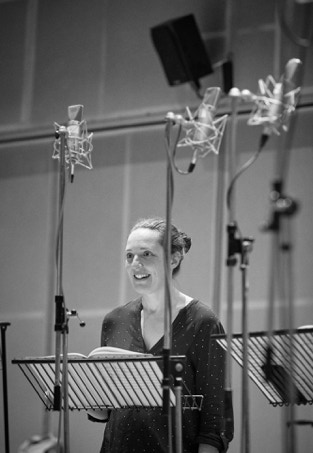THE IMAGE
Leonardo’s painting – all $450 million of it – is at once the most conventional and original of his paintings. The stock frontal image of Christ blessing and holding a globe was derived from the traditional portrayal of God the Father as a stern judge. Even Leonardo could not depart from the hierarchical presentation if the image was to function. But he has worked his inventive magic with it. The globe presenting the earth (mundus) had been transformed into an orb of rock crystal, which means that Christ is holding the crystalline sphere of the fixed stars, outside which is the ineffable realm of God. Christ has become the ‘saviour of the cosmos’. The evocation of the ineffable – ultimately inaccessible to our finite understanding – is underlined by the elusiveness of Christ’s blurred features, set off against the sharper characterisation of his blessing hand. He is inviting us to think that we can see Christ but visual certainty eludes us. The painting is Leonardo’s most profound statement about the sublime otherness of the spiritual.
The title 'Salvator mundi’ was not given to paintings at this time, which were accorded various names in inventories. It was later adopted in art as the standard name from the hymn that was sung over the Christmas period.
MARTIN KEMP
———————————————————————————————————————
THE MUSIC
Tallis sets the greeting, ‘O saviour of the world’, with arresting upward leaps. The style is fully imitative, each voice carrying the same melodies. The dark-hued texture this creates reflects the palette of the painting and is in fact magnified in our version which restores the music (usually transposed upwards to fit modern choral ranges) to its originally implied voice types: a high voice, two high tenors, baritone and bass. In its original publication Tallis and Byrd stressed the domestic non-church use of these pieces, which they didn’t call motets but ‘songs, which are called sacred because of their subject matter’.
From nearly 400 years later Howells’ translucent setting of the same text in English opens his famous Requiem. The two choirs transfigure one another, blurring the lines between them – almost an aural equivalent of the sfumato technique which helped scholars authenticate ‘Salvator Mundi’ as Leonardo’s in 2011.
ROBERT HOLLINGWORTH

TEXT / TRANSLATION
Salvator mundi, salva nos,
qui per crucem et sanguinem redemisti nos,
auxiliare nobis, te deprecamur, Deus noster.
O Saviour of the world, save us,
who by thy cross and blood has redeemed us,
help us, we pray thee, O Lord our God.
I FAGIOLINI
Clare Wilkinson - mezzo-soprano
Nicholas Mulroy - tenor
Matthew Long - tenor
Greg Skidmore - baritone
Charles Gibbs - bass

Clare Wilkinson
Mezzo-soprano
Credit Matthew Brodie